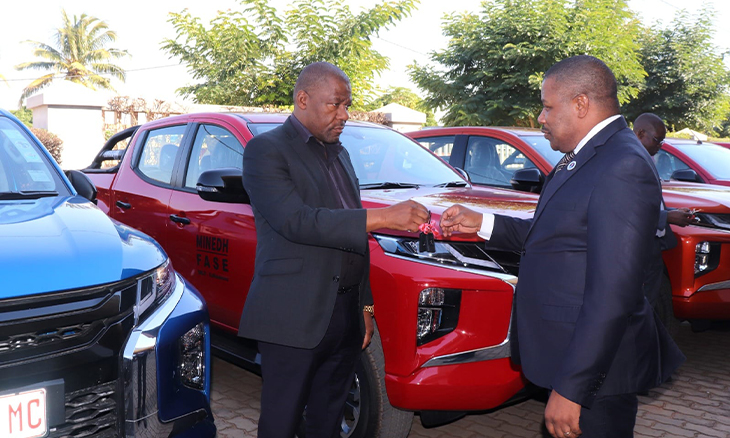Mozambique: New road tolls take effect - AIM report
Mozambique: Mixed reactions as Education Ministry allocates more than 160 vehicles

FILE - For illustration purposes only. [File photo: O País]
The Ministry of Education and Human Development (MINEDH) is currently in the process of allocating more than 160 vehicles to district directorates and teacher training institutes across the country. These are luxury cars acquired under the Education Sector Support Fund (FASE) mechanism, even while more than 7,000 classes are still taking place in the open air, children are without desks and there is a shortage of teachers.
In the last five years, the education sector has faced turbulent times. Among these, we can highlight first the delay in the arrival of school books, followed by the fact that there are more than seven thousand classes in the open air, across the country.
The problems do not stop there: there is also the failure to pay teachers overtime, among many others. But in the midst of all this, the education ministry decides to allocate luxury vehicles to district directorates and teacher training institutes.
These are luxury vehicles purchased for a sector that is doing badly in almost every way. In total, more than 160 Mitsubishi Triton 2020 cars were purchased for the MINEDH.
O País has learned that the vehicles were purchased by MINEDH’s international partners, through the Education Sector Support Fund (FASE).
The cars are intended for district directorates and teacher training institutes across the country ‘for supervision purposes’.
André Manhiça, from the Centre for Learning and Capacity Building in Society (CESC), says that the acquisition of these vehicles makes no sense as a priority for a sector in ruins.
“This year, the education sector has a deficit of 10,000 teachers; it has only managed to allocate 2,880 teachers. It also has a deficit of 760,000 desks throughout the country, and countless classes still study in the open air,” Manhiça says.
Civil society therefore believes that the priority of the Ministry of Education should be solving these problems.
“Hence, we have the student-teacher ratio, the student enrolment rate, the number of classrooms built, the number of desks allocated, and so on. These are the effective indicators within the education sector, and, to our mind, these should be the sector’s priorities. Given this decision, we believe that the government made a serious mistake by prioritizing superfluous issues, such as allocating vehicles to district directors and other representatives of the institutions,” Manhiça adds.
Although the vehicles were purchased by MINEDH’s cooperation partners, CESC believes that the government has the right to impose priorities.
The Education for All movement, for example, believes that the vehicles are important for supervision, and can help improve the quality of education, but believes that the ministry should have purchased cheaper vehicles. Education specialist Alípio Matangue says that the purchase of these vehicles leads us to reflect on the problems in the sector “from the ground up”.
O País contacted the Ministry of Education through the Directorate of the Communication and Image Office to discuss this matter, but the same director said that he would look for the data and make it available to the newspaper O País. However, after that, he never answered our phone calls again. Thus, once again, the institution closed itself off to the press.













Leave a Reply
Be the First to Comment!
You must be logged in to post a comment.
You must be logged in to post a comment.